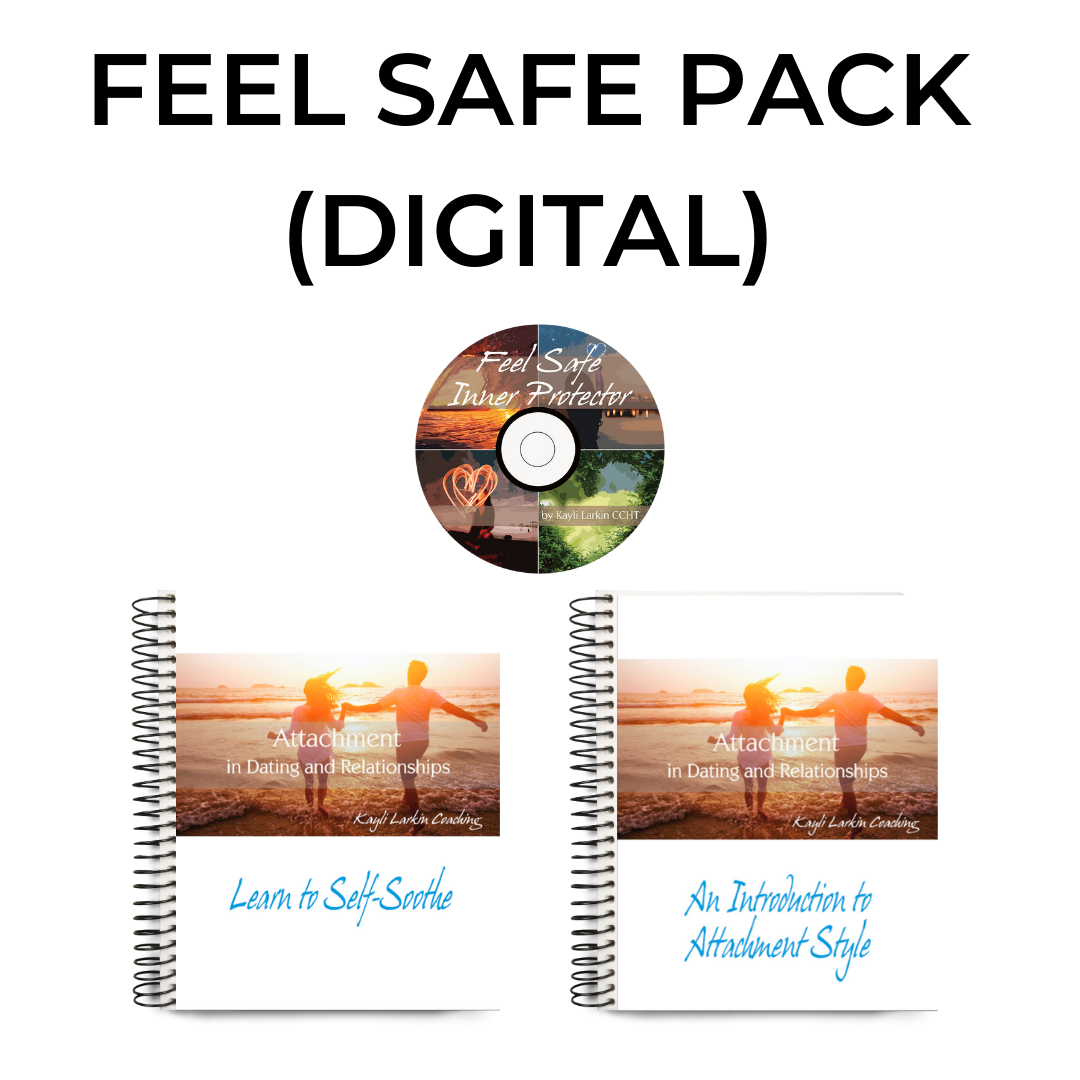How to Get Triggered Less (for Disorganized / Fearful Attachment Style)
If you have any disorganized or fearful attachment style in your mix, you’ve likely wondered why people and life events can seem to throw you off balance. You go to a party or event, and someone says just the right words to set off your personal inner critic. Or your significant other makes a comment that sends you from zero to sixty in under five seconds. Or someone at the store makes a comment that gets under your skin, and you can’t shake it the rest of the day, then once you’re home you keep thinking about it, replaying it in your mind, along with a litany of possible responses.
Getting Triggered
Getting triggered is about as fun as petting a grumpy porcupine. At times it’s a conscious or unconscious flashback to times when we were smaller or had less personal power to protect ourselves. Other times, it’s a reminder of a past trauma or painful event. But whether it’s a parent’s face or voice that we’re reminded of or an ex partner, getting triggered sets off activity in the limbic system — the emotional part of the brain, often at the expense of our logical and reasoning side.
Amygdala Hijacking
To make matters worse, when people get that amygdala hijack, they often say or do things they regret. This is because the amygdala is the part of the limbic system responsible for deciding if something is dangerous. When the brain senses a threat, the amygdala activates the fight or flight response and signals the brain to produce hormones to fight or flee to keep you safe. All this happens quickly — speed was necessary for our ancestors if there was a tiger waiting to pounce in the bushes. This means that your amygdala acts before your brain’s logical, reasoning centers have a chance to decide that the person cutting you off in traffic was just having a bad day.
Disorganized attachment and the Fight/Fleeze/Freeze response
Amygdala hijacking is more common for someone with disorganized attachment because this attachment style is formed from a background of trauma, or negative life events. When children don’t feel physically or emotionally safe, their amygdala is getting activated more frequently, they are more frequently in a state of fight/flight/freeze, and their nervous system becomes accustomed to this chronic activation and carries this stress response into adulthood.
The 4 attachment styles
A quick recap on the different attachment styles: There are four attachment styles that affect how we interact in our relationships: anxious or ambivalent attachment, avoidant or dismissive avoidant attachment, disorganized or fearful attachment, and secure attachment.
Anxious / ambivalent / pre-occupied attachment:
Tend to seek others for comfort and relationships
Can spend a lot of time thinking about relationships
Missed the consistent stability of predictable connection in childhood
The attachment system is stuck in the “on” position
Avoidant / dismissive avoidant attachment:
Tend to be independent and self sufficient
Often prioritize relationships lower than work, fitness, or hobbies
Missed the warm focus on emotions and comfortable relationships in childhood
The attachment system is stuck in the “off” position
Disorganized / fearful /anxious-avoidant attachment:
Can either oscillate between anxious and avoidant, or tend towards one in particular
Often have a difficult childhood or one where they didn’t feel physically or emotionally safe
Get triggered frequently and have trouble calming down
Secure attachment:
Feel comfortable being in connection or giving others space
Generally resourced and have a positive self-esteem
Tend to form long-term relatively stable relationships
You can read more about each of these attachment styles here.
So how do you stop getting triggered as much if you have disorganized attachment?
First, work on calming your overall nervous system.
Meditation, yoga, chi gong, or any hobby where you get in the flow and enjoy yourself is beneficial. Don’t have time for a beach vacation? You can trick your brain into believing that you are calm through visualizing those hobbies. Just like watching a scary movie makes the heart race and pumps out stress hormones like cortisol and norepinephrine — though I would recommend more feel-good relaxing movies if you’re working on calming the stress response — visualizing a vacation or favorite hobby activates more peaceful relaxing hormones.
Some people like to use guided imagery for this purpose. You can find all kinds of guided visualizations to listen to, and I have some audios available that are designed with attachment in mind. For disorganized attachment in particular, visualizing and imagining ways that you feel safe can be so helpful.
Some people calm the nervous system by working on vagal tone.
Interestingly, studies have shown that parenting behaviors and vagal tone early on predict disorganized attachment.(1) Vagal tone measures how well the vagus nerve is working. The vagus nerve is one of twelve cranial nerves that connect your brain to the rest of your body. It regulates everything from the fight freeze response to breathing, heart rate, and digestion. Stimulating the vagus nerve activates the parasympathetic, or rest/digest branch of the nervous system. Studies have found that certain breathing methods improve vagal tone, such as slow abdominal breathing where the exhale is longer than the inhale.(2)
Another way to stop getting triggered is to figure out what exactly is being triggered, heal from it, and move on.
Say you had a bad experience with someone who had a particular accent and now every time you hear that accent, you feel upset. One way to stop being bothered by that accent is to work out the original traumatic event (get help from a therapist with this), so you can forgive or heal or simply let go. Or if you don’t want to go digging into the past, you can sometimes find healing through re-association — in this example, listening to fun or relaxing audiobooks by readers with that accent.
One of the reasons we get triggered is because our brains are pattern-making machines. If you had an unpleasant experience every time you went to a particular restaurant, you would eventually stop going to that restaurant. Your brain would associate that restaurant with unpleasantness. You’d drive past it and have a negative thought. But say that restaurant got new management and a renovation and some new menu items, and your friends were raving about it. “I don’t know,” you might say dubiously. But if you went back and had a great experience, your brain would start to shift that pattern. You’d have new positive associations when you drove past it, and you might even rave about it yourself.
Triggers that involve people
Now how can you apply this principle to people so you’re not triggered so much by them? One of the traits of the fearful avoidant attachment style is that when people get triggered, they tend to avoid, disappear, or ghost the people they know. If you’ve been protecting yourself in this way, recognizing it as a protective mechanism is a good place to start. The missing need from childhood or trauma was safety, whether that was emotional safety that we can feel in our bodies or physical safety — in a sense, it’s all physical safety. So first practice the steps above to calm your nervous system and find ways to feel safe. You can also create a new pattern of association with the person, imagining the parts of them that are fun, enjoyable, and make you feel safe. If you’re not sure whether a person is good for you to be in a relationship with, you can get help sorting this out. This technique is not a means to stay in an abusive relationship. There may be good reasons not to have someone in your life, but there are also excellent reasons why we don’t want to completely avoid people as a repeating strategy in our relationships, if we haven’t yet learned how to handle being triggered.
Keep it positive
Lastly, stay positive — not in a pollyanna, spiritual bypassing sort of way, but in a way where you recognize that what you focus on helps shape your reality. Dwelling on the trigger, looping about it in your mind, does less to help you feel better than does healing if necessary and redirecting to a more positive outlook. Also, being in control over our moods has a positive impact on the people around us and on our relationships, and makes life a lot more enjoyable.
Want a tool to feel safer in life and in love?
Check out the Feel Safe Pack.
Tired of not feeling safe in love? Discover the magic strategies to feel safe in your body and in love.
Get the Feel Safe Pack which includes
A guided meditation to rewire the feeling of safety on an unconscious level
6 instant self-soothing strategies you can use anytime, anywhere to instantly shift your mood and feel more calm and relaxed
Introduction to the 4 different attachment styles and where you fit in
It is designed specifically by a Somatic Attachment Practitioner and Certified Clinical Hypnotherapist to help you feel safe on an unconscious level.
19:55 mins, voice
By Kayli Larkin, certified attachment practitioner
Citations:
1 https://pubmed.ncbi.nlm.nih.gov/24802799/
Parenting behaviors and vagal tone at six months predict attachment disorganization at twelve months
2 https://pubmed.ncbi.nlm.nih.gov/34588511/
Breathing and vagal tone





